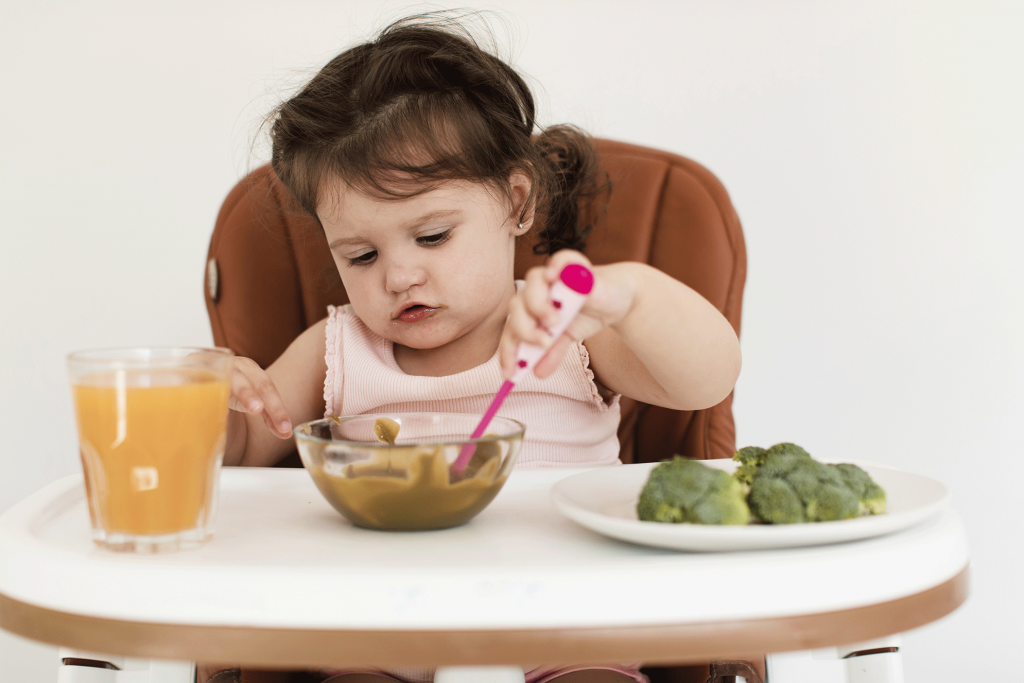Sugar should not be offered to children under two years of age. Understand why and see tips for balancing the menu after that age

The scientific community was more emphatic in the latter on the issue that sugar should not be offered in the first years of life.
The main concern is with the category of ultra-processed. Ready drinks, industrialized juices, crackers, petit suisse cheeses, flavored yogurts require moderation, but still end up being part of the food introduction of many children. “Several studies show that, unfortunately, we have a bad eating habit, and 83% of children are presented to this category in early childhood, which is not appropriate,” says Marisa C. (nutritionist).
At this stage of life, babies are starting their relationship with food, and any habit introduced there tends to be perpetrated for the rest of their lives. “It’s a delicate moment of developing food preferences and acceptance complaints. If we give in to the sweet at that moment the trends is that the child will prefer them later”, says Raquel Ricci, nutritionist at the Center for Food Difficulties of the PENSI Institute and the Nutrociência clinic.
Other than that, there’s the health issue itself. Sweet-rich and ultra-processed menus are associated with the risk of obesity, diabetes and cardiovascular diseases in adulthood and even childhood. The prevention of these diseases comes across the popular and deep relationship we have with sugar —who has never heard anyone say they feel sorry for children who can’t eat candy? — and no one will speak to ever present a brigadier to the little one.
But take time to present this universe is worth it. “Parents are judged, but they can be sure they are making the best decision for their children’s future,” Marisa said. One of the advantages here is to give time for the child to develop their palate with more natural flavors.
If this was done successfully, it is likely to even enjoy one sweet or another from time to time, but without getting glazed in them in the future.
What about after two years?
The idea is not to prohibit or release general, but to consume sparingly. “The current recommendation is 25g a day, or six teaspoons,” explains Virginia Weffort (SBP). It seems a lot, but this value considers all the sugar added in juices and so many other foods that are usually in the lunchbox.
A chocolate can already hits this goal. “And a can of soda is 35g,” Virginia adds. To get an idea, in the United States it is estimated that children eat up to 80g of sugar.
The World Health Organization gives a recommendation similar to the American, slightly stricter, around 5% of daily calories. Making this account is a bit difficult in practice, but you may consider that it is a very modest portion. “This amount can be supplied with the natural sugar of the fruits themselves,” says Raquel Ricci.
But what about the juice?

It is part of the eating habit of many families and all right, because fruits offer nutrients to children. The main problem lies in juices that are not made only with fruit, such as nectars, where the percentage of the vegetable is small and the sugar is high. Prefer integrals, without the presence of additives.
“Whole processed juice can be offered, but interspersed with other options, such as natural juice made at home, which is diluted in water and therefore may have less fructose,” says Raquel R.. Another tip is not to sit, to preserve some of the fruit fibers. Natural coconut water is also considered a valid option for the lunchbox —just check out the label’s fine lets.
Finally, keep an eye on the portion. The American Association of Pediatrics says that even natural juices should only be offered after the first year. Between 1 and 3 years, the ideal amount is 120 ml per day. for children between 4 and 6 years old, are 180 ml. Some packages contain much more than that.
Example is key
If the house lives with soda in the fridge and the school snack always takes stuffed wafers, it will be difficult for the child to understand alone that he should be able to consume these items. Therefore, the ideal is to leave the sources of sugar free for sporadic situations and set an example. “Eventually, he may be on a way out or at school snack, but having at home is establishing it as a habit,” Marisa teaches.
Here are other tips for making peace with sweetness:
- Enjoy the natural fruit dulçor to make juices with less sugar. Melon and watermelon are well-sweet specimens.
- Buy a limited amount of the desired food and set limits for the child. If she asks for a cookie stuffed in the market, for example, explain that they can take one package per month and that it should eat between two and three units per month.
- As the child grows up, talk to her about the harms of excess sugar, without putting terror, but making it clear that, in excess, he can harm health. But set an example in practice, too.
- If the small one already shows a greater appetite for sweets, the ideal is to make gradual reductions without abrupt cuts, but offering healthy exchanges and progressive decreases in sugar used in the preparation of beverages.
- Keep an eye on the food label. They are not required to point out the sugar content but, in the case of ready-made beverages, virtually all carbohydrate pointed out in the nutritional information table is sweet. The list of ingredients also gives important clues about hidden sugar. Glucose, corn syrup and fructose are some of the names that indicate their presence. The ingredients are arranged in descending order: the first is the most abundant.
- At special parties and occasions, allow consumption. Healthy eating is balanced, without neuras or guilt.
- Sweeteners are only recommended in specific cases for diabetic children or undergoing treatment against obesity. Offering them as an alternative to sugar on their own can make the child even more privilege the sweet taste, which is very potent in artificial sweeteners.
Disclaimer: This post may have affiliate links.


